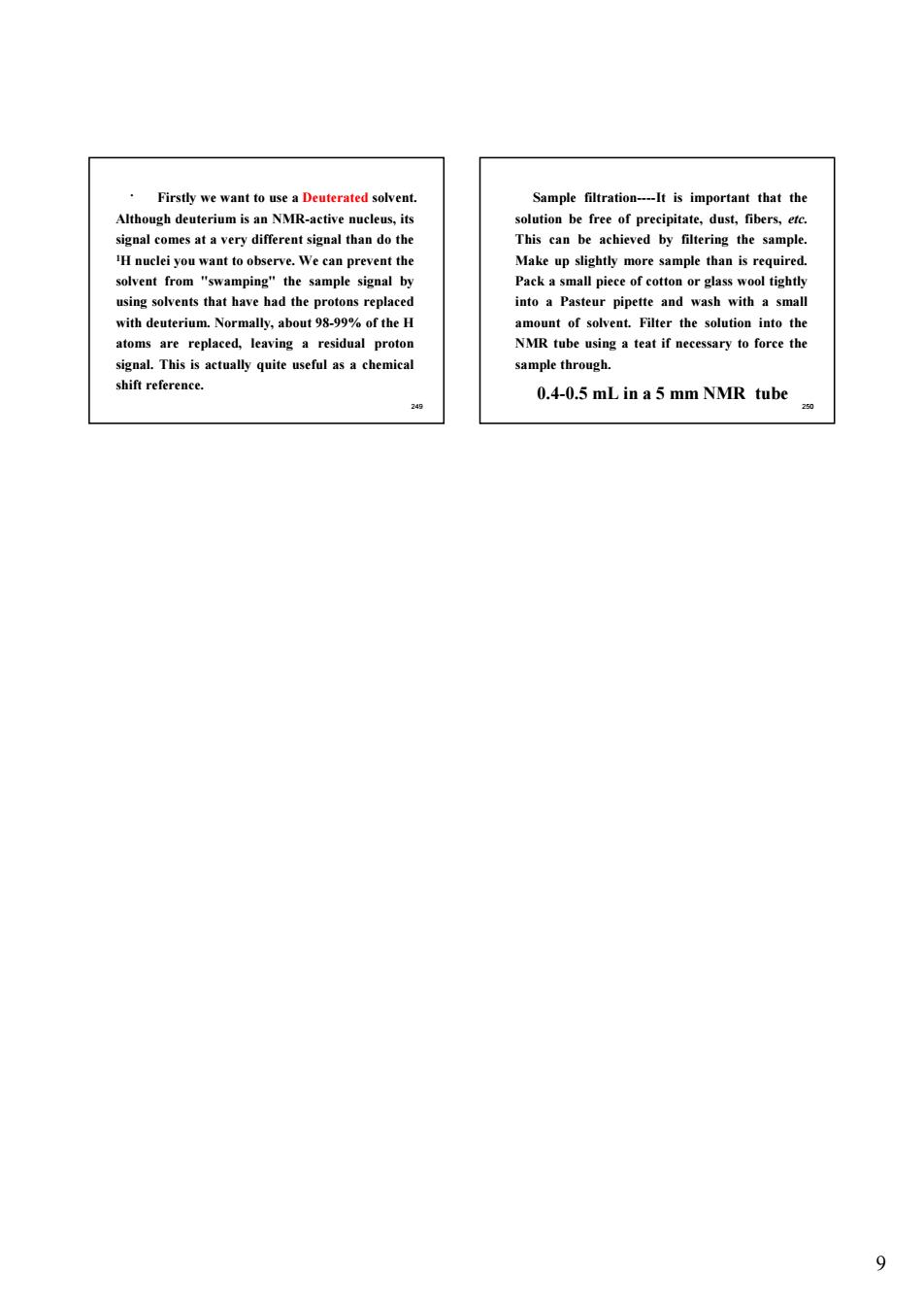正在加载图片...

Firstly we want to use a Deuterated solvent --It is important that the tho ugh deuterium is an NMR-active nucleu olution be free of p te,dust,libers,ef erent signal mnn0 Pack ap into a Pasteur pipette and wash with a small with deuterium.Normally,about99%of theH unt of solvent.Filter the solution into the atoms are replaced,leaving a residual proton NMR tube using a teat if necessary to force the a尚i,a sample through. 0.4-0.5 mL in a 5 mm NMR tube9 249 . Firstly we want to use a Deuterated solvent. Although deuterium is an NMR-active nucleus, its signal comes at a very different signal than do the 1H nuclei you want to observe. We can prevent the solvent from "swamping" the sample signal by using solvents that have had the protons replaced with deuterium. Normally, about 98-99% of the H atoms are replaced, leaving a residual proton signal. This is actually quite useful as a chemical shift reference. 250 Sample filtration----It is important that the solution be free of precipitate, dust, fibers, etc. This can be achieved by filtering the sample. Make up slightly more sample than is required. Pack a small piece of cotton or glass wool tightly into a Pasteur pipette and wash with a small amount of solvent. Filter the solution into the NMR tube using a teat if necessary to force the sample through. 0.4-0.5 mL in a 5 mm NMR tube